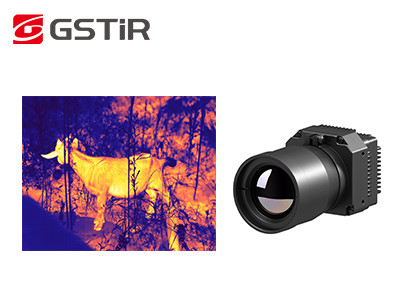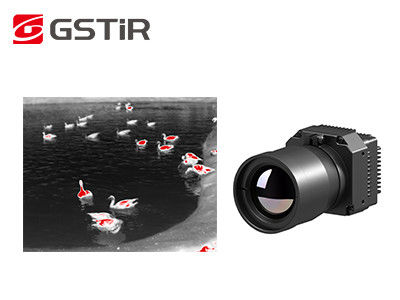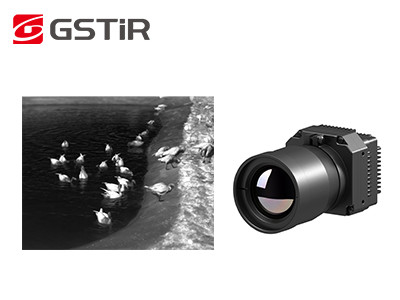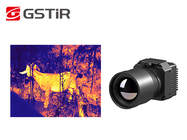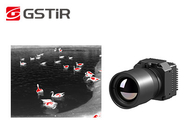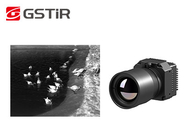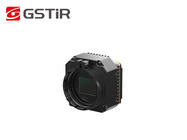-
Thermal Camera Core
-
Thermal Security Camera
-
Drone Thermal Camera
-
EO IR Systems
-
Thermal Imaging Binoculars
-
Infrared Thermal Camera Module
-
High Resolution Thermal Camera Module
-
Cooled Infrared Detectors
-
Optical Gas Imaging
-
Thermal Camera For Fever Detection
-
Cooled Camera Modules
-
Vehicle Mounted Thermal Camera
-
Integrated Dewar Cooler Assembly
-
Uncooled Infrared Detectors
PLUG1212 High Stability 1280x1024 Uncooled Infrared Module For All Weather Conditions

Contact me for free samples and coupons.
Whatsapp:0086 18588475571
Wechat: 0086 18588475571
Skype: sales10@aixton.com
If you have any concern, we provide 24-hour online help.
x| Resolution | 1280x1024/12μm | NETD | <50mK |
|---|---|---|---|
| Spectral Range | 8~14μm | Size | 20x20x10.4mm |
| Highlight | 1280x1024 Uncooled Infrared Module,High Stability Uncooled Infrared Module,PLUG1212 Thermal Camera Module |
||
PLUG1212 High Stability 1280x1024 Uncooled Infrared Module for All Weather Conditions
PLUG1212 uncooled thermal camera core offers thermal images up to 1280x1024 pixels and shows you the smallest of details. Its reduced 12µm pixel size offers better spatial resolution and matches shorter optical lens focus to achieve the same range mission.
Unlike traditional cooled thermal imaging systems, the uncooled HD LWIR 1280x1024/12μm VOx Thermal Imaging Module operates without the need for a cryogenic cooling system. This results in significant cost reduction, increased portability, and a simplified maintenance process. The module utilizes a state-of-the-art uncooled microbolometer sensor based on VOx (Vanadium Oxide) technology, ensuring reliable and continuous thermal imaging performance.
The compact design of the module, with its dimensions optimized for easy integration, makes it suitable for installation on drones, handheld devices, security systems, and other portable platforms. This lightweight module has been engineered to ensure seamless integration into existing systems, offering flexibility and versatility in thermal imaging applications.
PLUG1212 infrared thermal core is applied in a wide range of areas and its visual information solutions cover day, night, low visibility and all weather conditions.
- Ultra clear thermal imaging
- Stable performance
- Clear Image Quality & Details
- Strong Environmental Adaptability
| Model | PLUG1212 |
| IR Detector Performance | |
| Resolution | 1280x1024 |
| Pixel Pitch | 12μm |
| Spectral Range | 8~14μm |
| NETD | <30mk |
| Image Processing | |
| Frame Rate | 25Hz |
| Start-up Time | <25s |
| Analog Video | / |
| Digital Video | HDMI/RAW/YUV/BT1120 |
| Extension Component | USB/Camerlink |
| Dimming Mode | Linear/Histogram/Mixed |
| Digital Zoom | 1~8X Continual Zoom, Step Size 1/8 |
| Image Display | Black Hot/White Hot/Pseudo Color |
| Image Direction | Horizontally/Vertically/Diagonally Flip |
| Image Algorithm | NUC/AGC/IDE |
| Electrical Specification | |
| Standard External Interface | 50pin_HRS Interface |
| Communication Mode | RS232-TTL, 115200bps |
| Supply Voltage | 5±0.5V |
| Typical Power Consumption | <2.0W |
| Physical Characteristics | |
| Dimension (mm) | 56x56x40.2 |
| Weight | ≤220g |
| Environmental Adaptation | |
| Operation Temperature | -40°C ~ +70°C |
| Storage Temperature | -45°C ~ +85°C |
| Humidity | 5%~95%, Non-condensing |
| Vibration | Random Vibration 5.35grms, 3 Axis |
| Shock | Half-sine Wave, 40g/11ms, 3 Axis 6 Direction |
| Optics | |
| Optional Lens | Fixed Focus Athermal: 19mm/25mm |
The PLU1212 infrared imaging module is widely used in Security & Monitoring, Outdoors, Firefighting & Rescue, Law Enforcement & Rescue, ADAS, UAV Payloads etc.
![]()
![]()
1. How does an infrared detector work?
Infrared detectors work by sensing electromagnetic radiation in the infrared range. The exact mechanism of detection varies depending on the type of infrared detector.
Thermal detectors work by measuring the temperature change caused by absorbing the infrared radiation. For example, microbolometers consist of a matrix of tiny resistive elements that are sensitive to heat. When infrared radiation is absorbed by the detector, it causes the temperature of the resistive element to increase, resulting in a change in electrical resistance that can be detected and converted into an image.
Photon detectors, on the other hand, work by converting photons from the infrared radiation into electrical signals. Two common types of photon detectors are photovoltaic detectors and photoconductors. Photovoltaic detectors generate a voltage when infrared photons are absorbed, while photoconductors increase their conductivity when photons are absorbed.
Infrared detectors can also utilize other detection mechanisms, such as pyroelectricity, where changes in temperature induce a charge in a material, or thermoelectric effects, where a temperature difference between two materials generates a voltage.
The output signal from the infrared detector can be processed and displayed as an image, which can be used for a variety of purposes, such as thermal imaging in medical or industrial applications, remote sensing of the environment, and thermal scanning in security systems.



